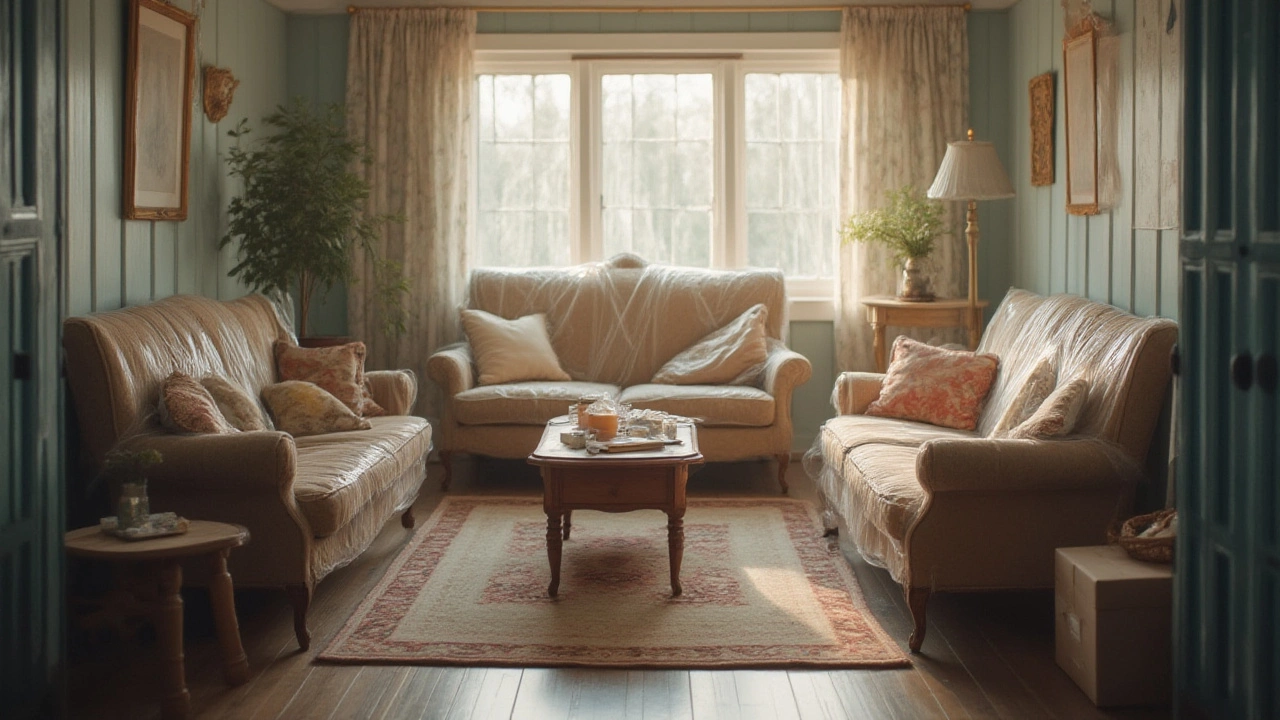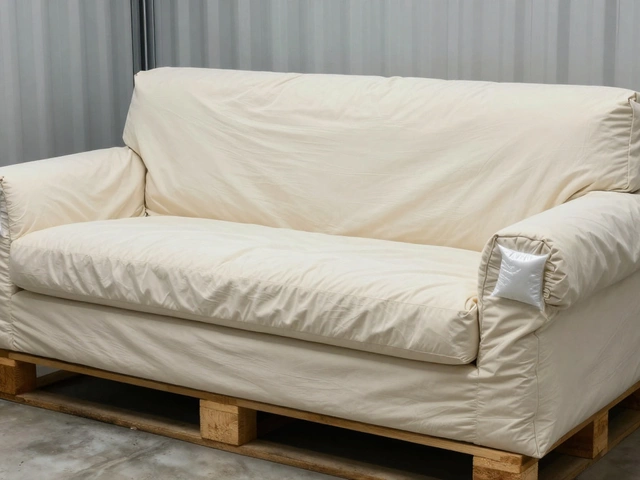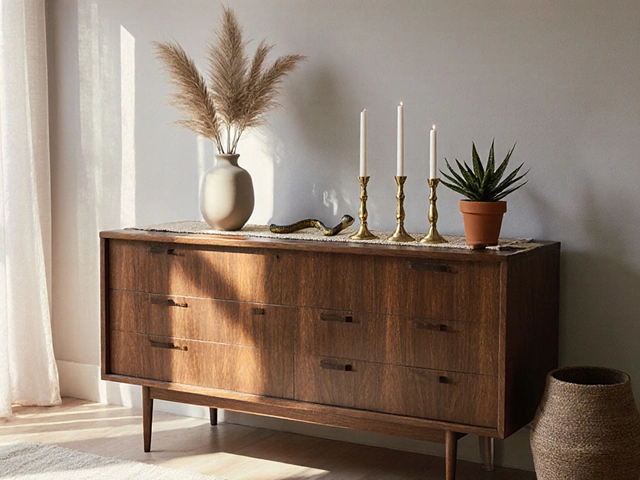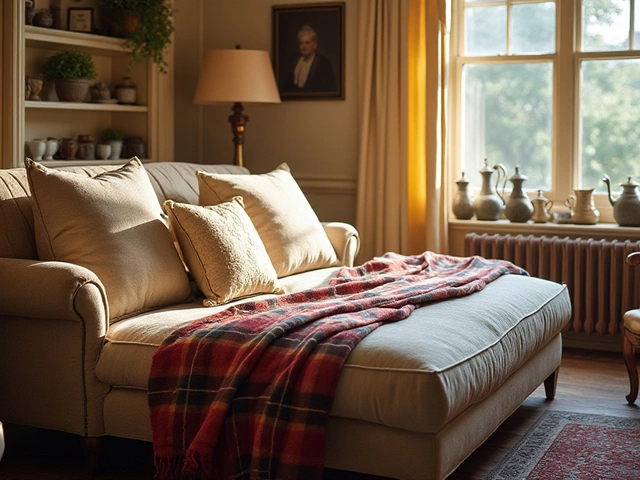If you've ever opened a storage unit to find your favorite couch sporting fuzzy green patches, you're not alone. Furniture mold is more common than most people realize, and it can attack even the most cherished pieces. Furniture you put away in seemingly perfect condition can come out months later ruined—value gone, memories tainted, and your wallet lighter. Mold doesn't sleep, and your stored furniture is often its favorite bed.
Why Does Furniture Mold in Storage?
Mold isn’t picky, but it thrives on three big things: moisture, warmth, and organic material. Storage spaces often serve up this perfect recipe, especially if you're using a garage, basement, or a unit without climate control. Even if you think your place is dry, humidity creeps in. According to the Environmental Protection Agency (EPA), anything above 60% humidity will encourage mold growth. And here’s a kicker: A study from the Journal of Environmental Health found that household mold could start developing on wood and fabric in just 48 hours if the humidity spikes. It’s wild how fast it moves in.
Why does this matter for your furniture? Let’s break it down:
- Wood and fabric soak up moisture: Tables, sofas, mattresses—they’re all sponges for airborne moisture. Even tiny cracks in furniture can welcome in humidity.
- Storage units can trick you: If you rent a unit that isn’t climate controlled, temperatures swing—day to night, summer to winter. This makes moisture condense inside the unit. Ever notice water pooling on the inside of car windows in the winter? Same thing.
- Poor airflow: Most storage units don’t have great ventilation. Stale air helps mold spores settle and multiply.
- Organic food source: Mold eats up cellulose, and most furniture is made from wood, cotton, or foam. Perfect feast for mold spores.
So yes—unless you plan well, furniture does mold in storage. In the United States alone, insurance claims for damaged personal property from mold and mildew shot up 14% over the last five years, according to the Insurance Information Institute. And most storage companies don’t cover mold damage in their basic policy. That’s money out of your pocket, and frustration you didn’t sign up for.
What Types of Furniture Are Most at Risk?
Not all furniture is created equal when it comes to mold risk. Some items are absolute magnets. Go through almost any self-storage accident post online and you’ll see the same suspects:
- Fabric sofas and chairs: Upholstery traps moisture and gives spores a playground. If your furniture has foam padding, it’s even riskier—the sponge-like material sucks up moisture fast.
- Wood furniture: Solid wood, plywood, particleboard—mold will attack all of these. Varnished or lacquered pieces are slightly safer but not immune, especially if there are scratches or worn edges.
- Mattresses: Memory foam or traditional—they’re both at the top of the “mold magnet” list. Mold can grow deep inside, making it impossible to clean properly.
- Leather pieces: You might think leather is safe, but it’s still an organic material. Leather couches can develop mildew patches that are tough to get rid of.
- Paper and cardboard: Ok, not furniture, but worth mentioning. If you stack books or store items in cardboard boxes, you’re giving mold another tasty snack.
Plastic, glass, and metal have a fighting chance. Mold rarely gets a foothold unless there’s dirt for it to feed on, or rust and corrosion for moisture to hide under. Still, mixed-material furniture—even if it just has a fabric trim or a wooden base—can fall victim if the environment turns damp.
If you’re wondering which types are most likely to get ruined, here’s a simple data table showing the risk scale from low to high based on everyday items:
| Furniture Type | Mold Risk |
|---|---|
| Upholstered Couch | Very High |
| Wood Dresser | High |
| Leather Chair | Medium |
| Metal Bed Frame | Low |
| Glass Table | Very Low |
| Foam Mattress | Very High |
| Plastic Shelves | Low |
I once put an old piano in storage, thinking it was safe because the unit was sealed. I came back six months later—green fuzz along every key and a smell that didn’t quit. Trust me, even the cleanest, sturdiest furniture gets slimed if you don’t prepare.
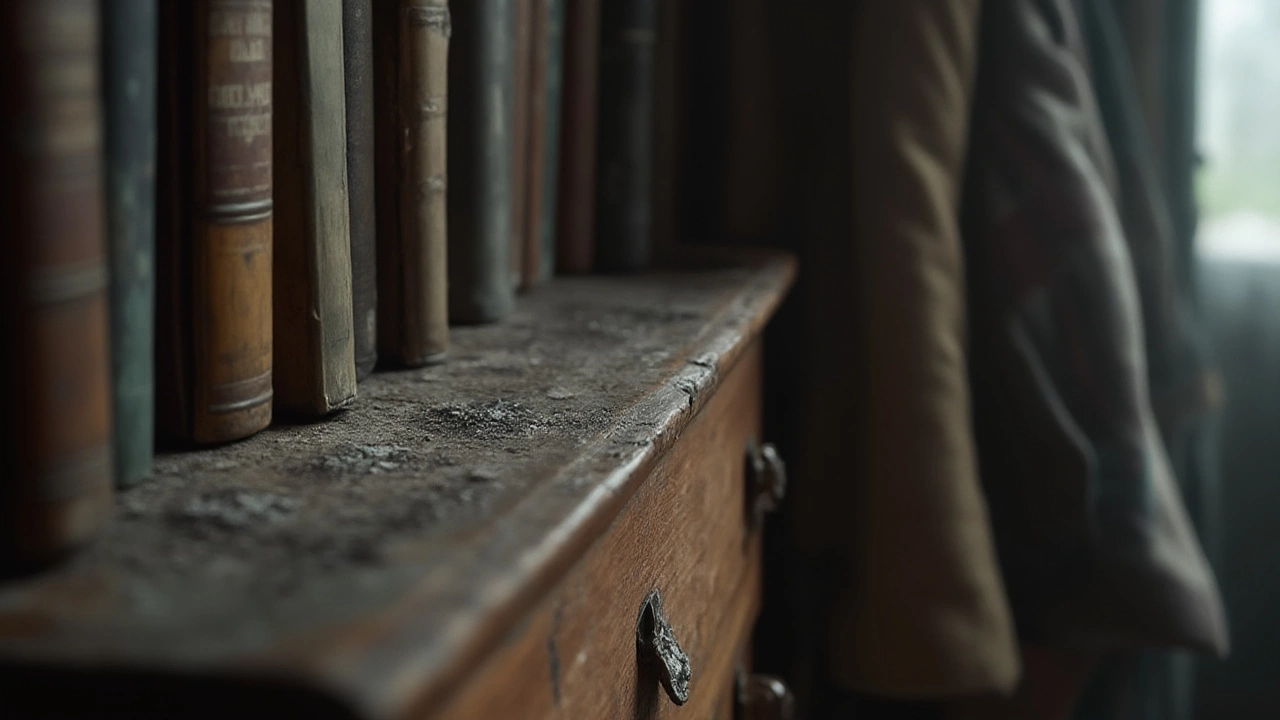
How Can You Tell if Furniture Has Mold?
Most people expect some dramatic sign—a thick, fluffy layer like in horror movies. In real life, mold is sneakier and often hard to spot early. Here’s what to actually watch for:
- Smell: The biggest giveaway is that musty, earthy odor. It lingers and sticks to your nose and clothes. If it smells odd—even just a little—don’t store wishful thinking, check everything.
- Spots and stains: Early mold might show as green, black, white, or even pink dots. Sometimes it looks like dust or grime but won’t wipe away easily.
- Surface texture: Mold feels fuzzy, slimy, or velvety. If you run your hand over the wood or fabric and it feels off, take it seriously.
- Mildew: This cousin of mold shows up as flat, powdery spots—usually white or gray—especially on leather, vinyl, and painted surfaces.
- Health symptoms: If you open your unit and immediately start sneezing or get itchy eyes, that’s mold working its magic on your immune system.
If you discover mold early, quick action can save most items. But leave it for weeks or months, and it’ll dig in. Always check corners and undersides—places with less airflow get hit first. Flip mattresses, tip over couches, and shine a flashlight along seams and cracks. Whenever you spot something, don’t convince yourself it’s always “just dust.” Treat it before it spreads.
How to Keep Furniture Safe from Mold in Storage
Ready for the good news? You don’t have to lose the fight against mold. With some practical steps (and a bit of planning) you can keep your furniture in top shape—even in less-than-ideal storage conditions.
- Choose climate-controlled storage. This is the single best investment. Even in mild areas, indoor, climate-stabilized units keep humidity under 50% and temperatures moderate. Think of it as health insurance for your stuff.
- Clean everything first. Dust, food crumbs, sweat—all feed mold. Wipe down wood with a mild cleaner, vacuum fabric surfaces, and dry leather properly before storing. Never put away damp or sweaty items.
- Let things dry. After cleaning, leave items in a breezy spot for a day or two. Even minor dampness sets the mold cycle going.
- Cover smartly. Use breathable covers—like cotton sheets or special furniture bags—not thick plastic tarps. Trapping air means trapping moisture. Avoid sealing things up unless you know they’re 100% dry.
- Elevate your furniture. Stack items on pallets or bricks to keep airflow going underneath. Even a little lift makes a huge difference—moisture often settles on cold concrete floors.
- Let air move. Space out your items rather than stacking tightly. The more airflow, the less chance mold has to build colonies.
- Use moisture absorbers. Silica gel packs, DampRid, or other desiccants help pull excess moisture out of the air. Switch out desiccants every few months. Some people swear by small buckets of cat litter—just don’t spill.
- Monitor humidity. Put a $10 digital hygrometer in the unit and check when you visit. If you see anything above 60%, it’s time to boost your moisture control game.
- Visit regularly. If possible, check your storage unit every month. Early action keeps problems small. Bring a flashlight and take a quick sniff test—your nose knows way before your eyes will.
- Treat all visible mold quickly. Use white vinegar, rubbing alcohol, or a commercial mold remover. For wood and fabric, gentle dabbing works better than scrubbing.
Got a special heirloom? Wrap it in acid-free paper and store it off the ground. For mattresses, try anti-mold sprays made for bedding before storing. And don’t ignore insurance—ask about coverage for mold or mildew before you sign up for storage. You might need a special rider on your policy.
If you've got to use non-climate storage, try to avoid the hottest and wettest months. Late spring or early fall usually means lower humidity and less risk.

What to Do If Mold Has Already Hit Your Furniture
Maybe you’re reading this a bit too late. If you spot the fuzzy stuff, don’t panic. Quick action can sometimes turn around even a nasty outbreak.
- Move the furniture outside if you can. Sunlight and fresh air slow mold growth. Don’t try cleaning inside the storage unit—spores will just float onto nearby items.
- Wear gloves and a mask. Mold spores can mess with your breathing and skin.
- For hard surfaces (wood, metal): Mix water and white vinegar (50:50) or use diluted bleach (one cup in a gallon of water). Wipe with a soft cloth—not a brush, which can damage finishes. Dry completely with a towel.
- For fabrics: Dampen a clean white cloth with vinegar and gently blot. Don’t saturate. For removable covers, wash in hot water with vinegar added. Dry under direct sunlight if possible.
- For leather: Use rubbing alcohol diluted with water (50:50) on a cloth and wipe the area gently. Let dry and buff with a leather conditioner. Avoid soaking leather—moisture can cause more harm.
- Let everything dry completely in the sun for several hours. Sun kills some spores and stops the moisture cycle.
- Dispose of any item that’s rotten through or covered edge-to-edge in mold. Deep mold can’t always be removed—and it’s not worth gambling your health.
- Sanitize the storage space before putting items back in. Use a shop vac and a mold cleaner along all corners and floors.
- If you’re dealing with a big mold infestation on expensive items, get an expert. Professional furniture cleaners have industrial tools and the right chemicals for deep cleaning.
- Once clean, repeat the drying and prevention steps before restoring your stuff to storage.
Find mold again and again? Move your stuff to a drier space, or reconsider keeping anything that soaks up moisture in that particular storage unit. Sometimes the cheapest solution is using less, not more.
One last thing: many people don’t realize that mold in storage can turn into a legal issue if you're sharing a unit, or if mold damages someone else’s stored goods. Take pictures, document everything, and talk to the storage facility as early as possible.
